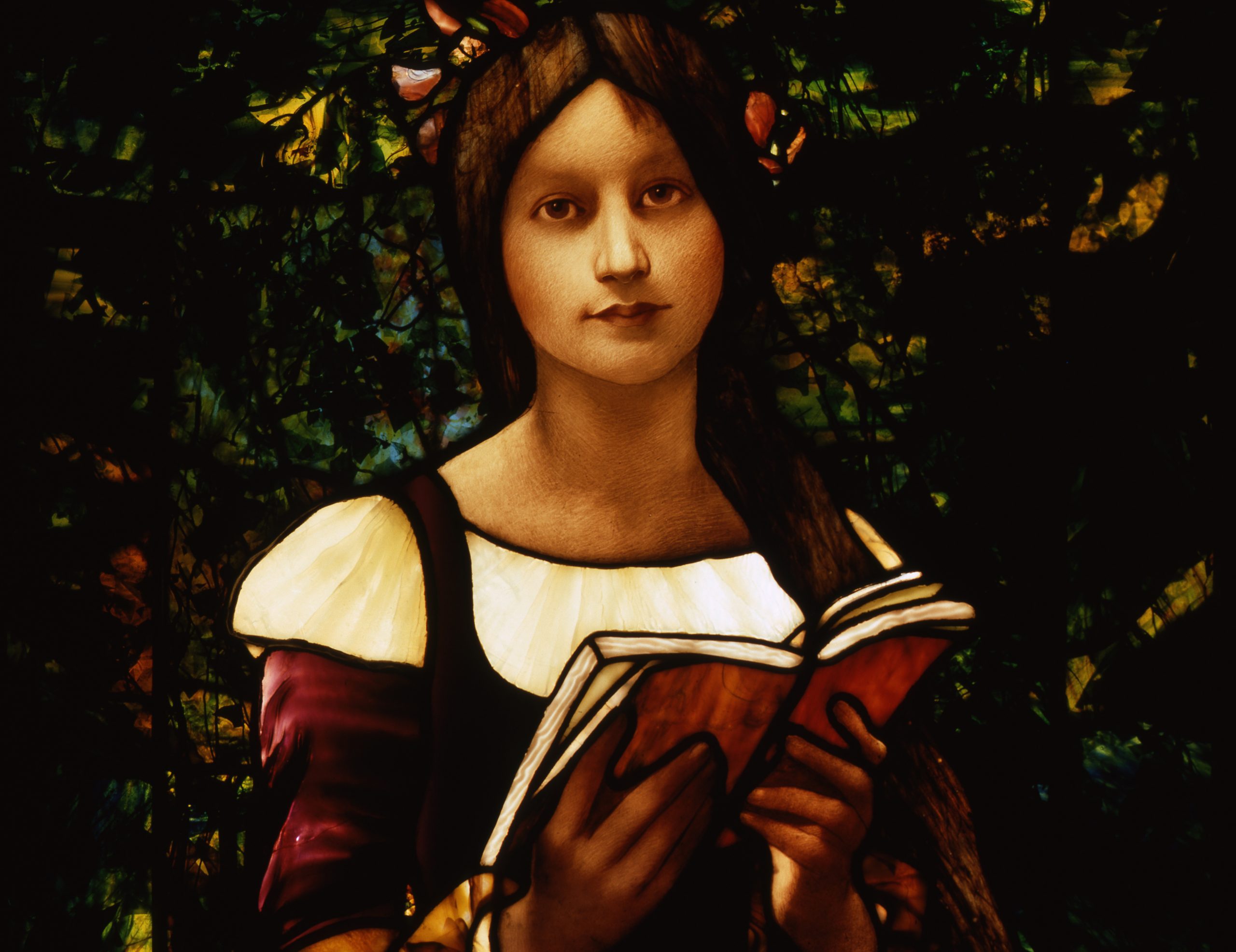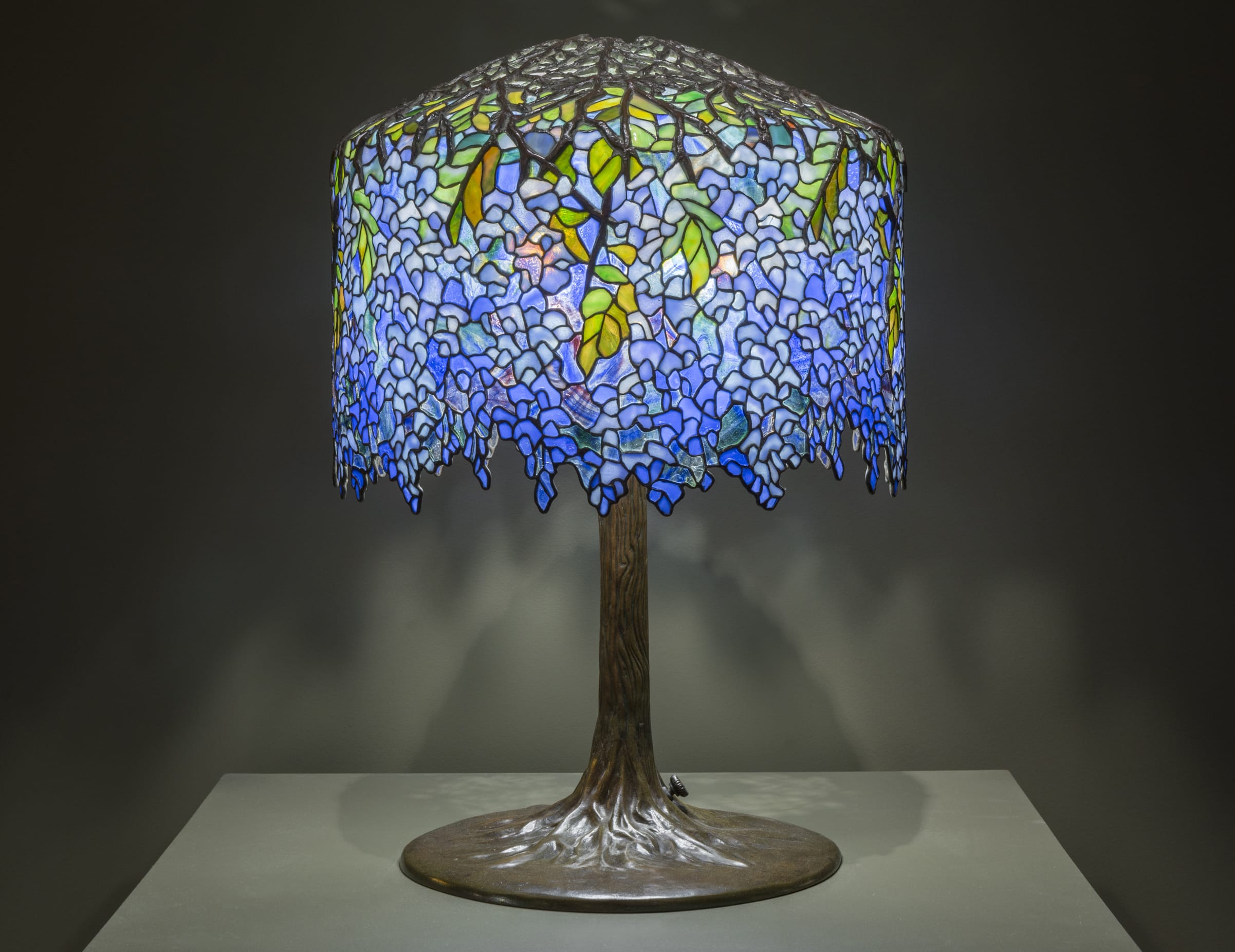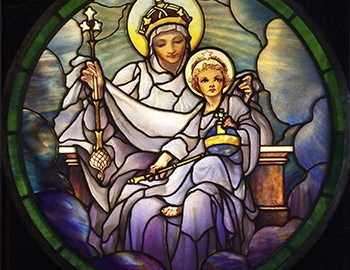June 1, 2019 – September 8, 2019
See some of the most iconic and celebrated works of the famous Tiffany Studios in this special exhibition. At the MSV now through an extended closing date of September 8, 2019, Tiffany Glass: Painting with Color and Light presents five windows, nineteen lamps, and more than 100 pieces of opalescent flat glass and glass “jewels” that illustrate the rich expanse of color and light available to the artists at the Tiffany Studios (read the press release).
As a painter, Louis C. Tiffany (1848–1933) was captivated by the interplay of light and color, and this fascination found its most spectacular expression in his glass “paintings.” Through the medium of opalescent glass, Tiffany could actually capture light in color and manipulate it to achieve impressionistic effects. Using new and innovative techniques and materials, Tiffany Studios created leaded-glass windows and lampshades in vibrant colors and richly varied patterns, textures, and opacities.
Organized by The Neustadt Collection of Tiffany Glass, Queens, New York, Tiffany Glass: Painting with Color and Light presents objects that exemplify the rich and varied glass palette, sensitive color selection, and intricacy of design that was characteristic of Tiffany’s leaded-glass objects. Along with highlighting key figures at Tiffany Studios who made essential contributions to the artistry of the windows and lamps—including chemist Arthur J. Nash and designers Agnes Northrop, Frederick Wilson, and Clara Driscoll—the exhibition illustrates the labor-intensive process of making leaded-glass shades and explores the topic of authenticity through the display of three examples Tiffany lamp forgeries.
About the Neustadt Collection:
Dr. Egon Neustadt, the founder of the Neustadt Collection, began acquiring Tiffany lamps in 1935. He went on to amass an almost encyclopedic collection, but perhaps his most significant acquisition came in 1967 when he purchased the flat glass and “jewels” leftover from the closing of the Tiffany Studios in the late 1930s. This collection contains some 275,000 pieces of glass and is the only holding of its kind.




